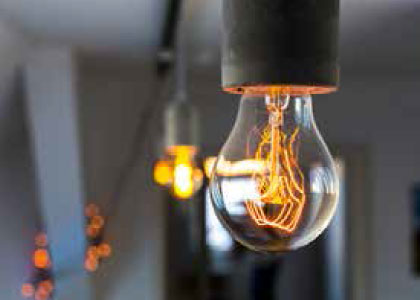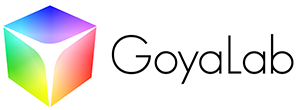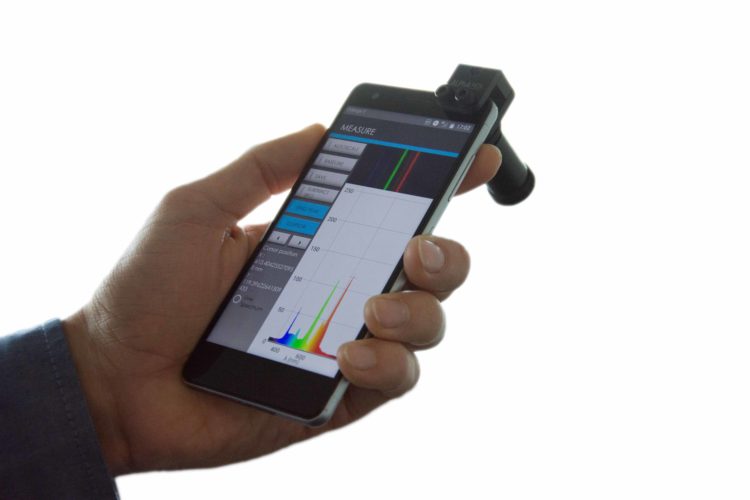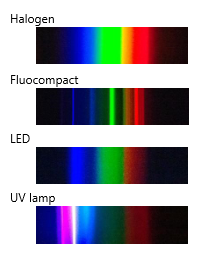
Introduction:
The advent of LEDs has been a game-changer for the lighting industry. Indeed LEDs have already deeply penetrated the automotive and indoor lighting sector and are spreading across various outdoor lighting applications for highways, roadways, bridges, and tunnels. LEDs are slowly but surely replacing sodium lamps, costly metal halides, and halogen lights owing to various advantages such as high efficiency, low maintenance cost, and high lumen output. This paradigm shift calls for new tools for the characterization of such light sources.
GoSpectro as a measurement tool for lighting
GoSpectro (Figure 1) is a simple device that can turn any smartphone or tablet equipped with a camera into a compact light spectrometer. In fact this tool enables spectral analysis of light sources, optical filters and various colored objects. This, by measuring emission, absorption, reflection and transmission spectra with unmatched compactness and ease of use. It is the ideal companion for light characterization in the fields or in the lab.
In this application note, we tested GoSpectro on various lamps (LED, halogen, fluocompact, etc) and on optical filters. Sometimes we used the measured spectra to determine the Correlated Color Temperature (CCT) of lights sources and the transmission curve of optical filters.
Light source characterization
We can use GoSpectro to measure the emission spectrum of different types of light sources. The Figure 2 illustrates such emission spectra.
These spectra emission are very specific and we can use it to clearly identify the type of lamp under investigation, even at a far distance. This is particularly useful for the maintenance of street and roadway lighting.
We carried out the tests on halogen lamp and a “cool LED” to try and determine their Correlated Color Temperature (CCT). Using the intensity calibration function available on the GoSpectro application we acquired spectra. Then, from the measured spectra we calculated the CCT:


